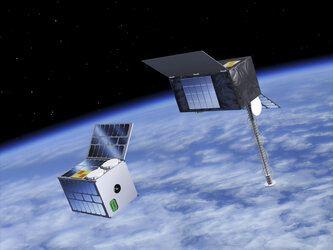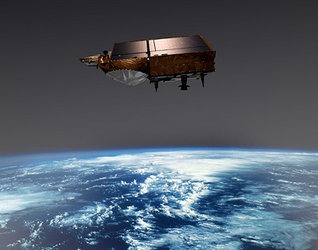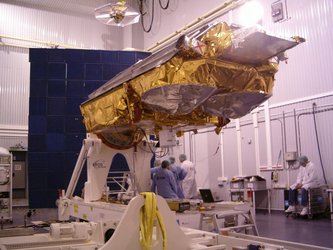Major milestone reached in CryoSat-2 development
Just two years after the decision to rebuild CryoSat, Thales Alenia Space have already rebuilt and tested the new primary instrument SIRAL-2 and shipped it from their premises in France to Astrium in Germany for eventual integration onto the CryoSat-2 satellite.
Since the consequences of diminishing ice cover as a result of climate change are far reaching, CryoSat-2 has been designed to measure the rate of change in the thickness of floating sea-ice and the ice on land in order to monitor this fragile component of the Earth system. Improving the measurement of relatively thin sea-ice thickness as well as surveying the surface of the ice sheets to detect small changes requires specialised instrumentation and science processing methods. The answer lies in an innovative radar altimeter called the Synthetic Aperture Interferometric Radar Altimeter-2 (SIRAL-2).

Unlike other Earth Observation radar altimeters, SIRAL-2 transmits a burst of pulses at a rate much higher than standard systems. SIRAL-2 heralds a new generation of space altimetry systems through its ability to measure sea-ice thickness and freeboard at greatly improved resolution in the along-track mode by using a Synthetic Aperture processing technique, whilst over ice margins and sloping surfaces the SAR-Interferometry mode helps improve elevation measurements.

CryoSat-2 replaces CryoSat, which was lost due to a failure in the launch timing sequence in October 2005. Authorisation by the Programme Board for Earth Observation (PE-EO) to rebuild the mission was given in February 2006. Although the objectives of the mission remain the same, there have been a number of improvements to the design - notably, CryoSat-2 will carry a back-up SIRAL.
"It is a remarkable achievement that Thales Alenia Space have managed to deliver this instrument in such a compressed time frame considering the new design constraints", stated ESA's CryoSat-2 SIRAL Engineer Robert Cullen. "What one has to understand is that, unlike SIRAL-1, SIRAL-2 is a fully redundant instrument meaning in less than two years the major subsystems of, not one, but two radar altimeters have been constructed and successfully tested. This is down to the skills and dedication of a team of engineers and management whom have impressively collaborated with Astrium and ESA CryoSat project teams to date."

SIRAL-2 is now undergoing initial health checks before integration with its antenna sub-system, developed by Saab Space, in mid-February and integrated onto the CryoSat-2 platform in early March. It will then be shipped to IABG (Industrieanlagen-Betriebsgesellschaft mbH) Munich, Germany in early summer for final testing.















 Germany
Germany
 Austria
Austria
 Belgium
Belgium
 Denmark
Denmark
 Spain
Spain
 Estonia
Estonia
 Finland
Finland
 France
France
 Greece
Greece
 Hungary
Hungary
 Ireland
Ireland
 Italy
Italy
 Luxembourg
Luxembourg
 Norway
Norway
 The Netherlands
The Netherlands
 Poland
Poland
 Portugal
Portugal
 Czechia
Czechia
 Romania
Romania
 United Kingdom
United Kingdom
 Slovenia
Slovenia
 Sweden
Sweden
 Switzerland
Switzerland




























